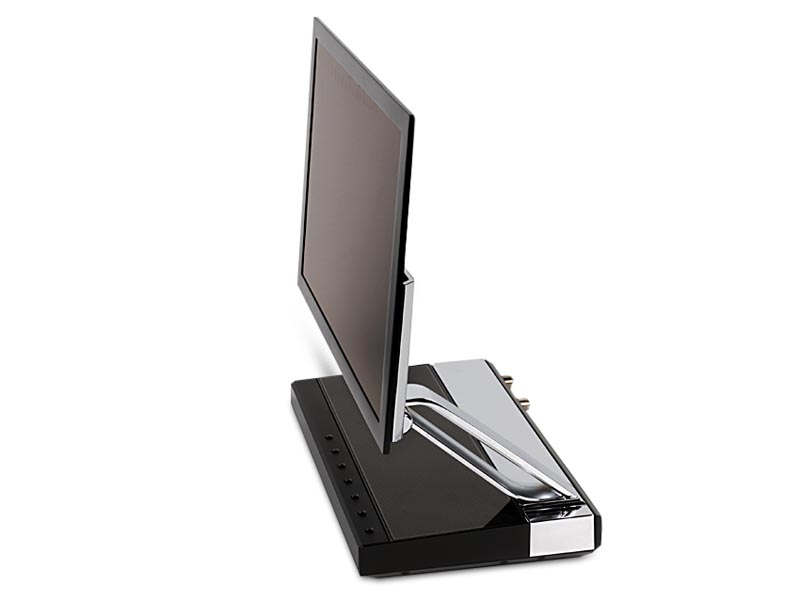TechRadar Verdict
Pros
- +
Superb picture with depth, colour fidelity and exquisite sharpness
- +
Light and oh-so cute
Cons
- -
Hideously expensive
- -
Not HD Ready, if that matters
Why you can trust TechRadar
Like robot servants, solar-powered hovercars and affordable energy bills, OLED has been touted as the future, but unlike those other examples, it's actually become a reality.
Here in the Sony XEL-1, the tech is wrapped up in a fully-functioning, all-singing and, most importantly, available-to-buy television. Admittedly, it's in miniature form, with an 11in screen and titchy pedestal, and the whole package costs a small fortune (no pun intended), but it works, man. It works.
Extraordinary black levels
The screen, as hobbitesque as it may be, is gorgeous – in spite of a 960 x 540 pixel resolution. Because of its diminutive nature, there's little need for higher pixel counts, the individual cells are already so small that you can't see them. I'd even go as far to say that there's a sharpness exhibited by the XEL-1 that a 60in Full HD panel would find hard to match.
But what's more extraordinary and, most importantly, unique to the technology is the ability to turn each pixel completely on or completely off with zero light bleed. This results in astonishing black levels, even more so than with the latest Kuro plasma TVs, and an unsubstantiated and ultimately immeasurable contrast ratio of more than 1,000,000:1.
Incredibly slim TV
With great black level response comes great sense of depth. Small, yes, but pictures on this Sony are almost three dimensional, remarkable seeing as the screen is a mere 3mm thick – the same width of, approximately, 45 pages of this magazine or the brain of a reality TV bimbo.
That's without counting the bezel and solid pedestal, admittedly. The UK edition, expected in early 2009, may be slightly bulkier still. When that version arrives it will feature four tiny micro speakers (one mounted in each corner of the screen) but, then, the rest of the telly part of the equation needs to go somewhere. UK consumers should consider themselves fortunate indeed, as the Japanese model reviewed here barks out sound like a bronchial Chihuahua.
Nonetheless, the visible display is incredibly and impressively slim. Especially considering the vibrant picture performance. Just think of the possibilities. A flatpanel that's actually completely flat? With images offering window-like clarity?
The future is OLED
However, as good as this reassuringly pricey boy's toy may be, Sony's slice of the future is to be taken for exactly what it is, a tempting taste of what may be to come.
As a viable purchase, it's currently best viewed as a desk plaything for the blessed of pocket. It's awesome in quality, but the visual area is too diminutive to watch a DVD or broadcast for any length of time. Still, we'll all absolutely want one when they ship.
Jamie is a freelance tech, travel and space journalist based in the UK. He’s been writing regularly for Techradar since it was launched in 2008 and also writes regularly for Forbes, The Telegraph, the South China Morning Post, Sky & Telescope and the Sky At Night magazine as well as other Future titles T3, Digital Camera World, All About Space and Space.com. He also edits two of his own websites, TravGear.com and WhenIsTheNextEclipse.com that reflect his obsession with travel gear and solar eclipse travel. He is the author of A Stargazing Program For Beginners (Springer, 2015),

